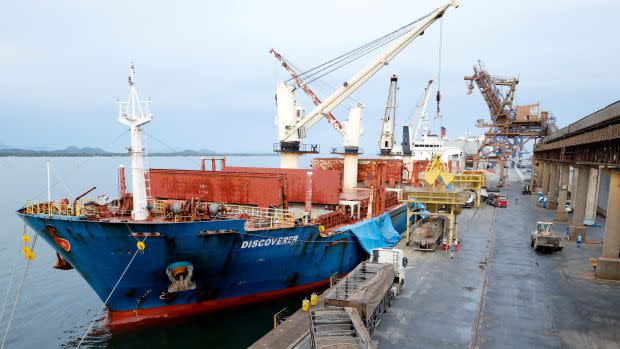Hurricane Ida shows the fragility of agricultural supply chains

Hurricane Ida barrelled into the Louisiana coast on Aug. 29, bringing 150 mph (230 kph) wind gusts, torrential rain, and widespread power outages to New Orleans and the surrounding region. It also brought all shipping traffic through the mouth of the Mississippi River to a grinding halt, snarling supply chains at the start of a crucial period for US grain exports.
The US Coast Guard closed the Mississippi to barge traffic ahead of the storm on Aug. 28, and the New Orleans International Airport shut down passenger and cargo traffic on Aug. 29. The Port of New Orleans closed its container shipping terminals on Aug. 30 and stopped all “breakbulk operations,” which refers to moving cargo from large ocean freighters to smaller barges for transport up the Mississippi River.
It’s unclear when the flow of goods through the Mississippi River will resume. Container terminals and breakbulk operations “will remain closed until more information is known, and dependent upon power restoration,” according to an Aug. 30 update posted to the Port of New Orleans website. More than 1 million households in the region have no power and it could take up to a month to fully restore electricity.
Louisiana port closures snarl soy shipping
Power outages in New Orleans have major ramifications for everyone from soy farmers in the Midwest to grocery shoppers in China. Ports in and around New Orleans handle 61% of US soybean exports, according to Mike Steenhoek, executive director of the Soy Transportation Coalition. The lion’s share of that soy goes to China, where farmers use soy as feed for pigs and chickens and industrial processors turn the beans into widely used soybean oil. China is by far the largest importer of US soybeans, and consumes a quarter of the entire crop raised in the US.
Hurricane Ida struck just before the start of the peak season for US soy exports, which runs from September through February. “The big question for our industry is how elongated the closures will be,” Steenhoek said. The industry, he said, is holding its breath for the results of damage assessments at ports, power stations, and other critical infrastructure. A storm of Ida’s magnitude can even reshape the depths of shipping channels in the Mississippi River, further delaying barge traffic.
If shipping through New Orleans remains closed, soy farmers have limited options. Most are based in the Midwest, and their business models depend on being able to send their crop down the Mississippi River on barges. “The barge to ocean vessel journey is very economical, and really well-positioned to move heavy products like soybeans and other grains long distances,” said Steenhoek.
Some farmers will be able to reroute their soy crop to ports in the Pacific Northwest, but transporting grain on trains or trucks is more expensive. “Agriculture, as a rule, is a tight margin industry,” Steenhoek said. “These costs usually get passed on to farmers.”
Typically, China relies on the US for about a third of its soybean imports, which bolster the country’s domestic soy production. Soybeans are a key livestock feed, which have helped China expand its production of meat to satisfy the demand of an increasingly prosperous population. As a result of the US-China trade war, American soybean exports to China plummeted in 2019 and 2020. In those years, a bumper soy crop in Brazil rose to fill the gap between Chinese demand and American supply. But Washington and Beijing have since eased trade barriers, and Brazil’s soy production has dipped, leaving China once again dependent on the US for its imported soybeans.
Hurricane Ida scrambles already strained supply chains
The port closures in New Orleans exacerbate existing supply chain woes. A shortage of everything from qualified truck drivers to shipping containers has driven freight costs to dizzying heights. A record-breaking 44 container ships are stuck waiting to enter ports on the California coast. “It’s never a good day to have a storm like this arrive, but it’s particularly bad when supply chains are under a lot of stress,” said Steenhoek.
Global supply chains simply aren’t built to withstand the kind of pressure they’ve been placed under in the past two years. The rise of “lean supply chains”—which sought to maximize efficiency by cutting redundancy out of shipping and production—has left the world dependent on an increasingly precarious trade network that must function near perfectly to circulate goods throughout the global economy. Chronic disruptions like the global pandemic have combined with acute crises like Hurricane Ida to push these supply chains to their breaking point.
Sign up for the Quartz Daily Brief, our free daily newsletter with the world’s most important and interesting news.
More stories from Quartz:
Texas’s new anti-abortion law turns citizens into bounty hunters
Psychology suggests that when someone calls you the wrong name, it’s because they love you
